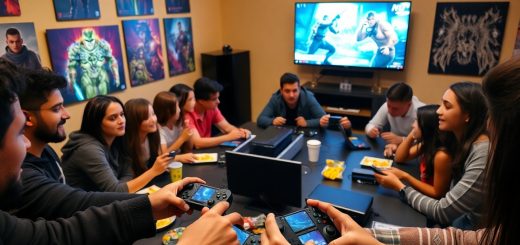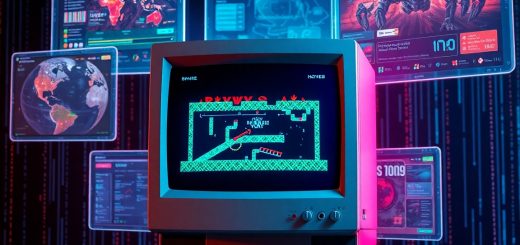How to Create Fan Art for Your Favorite Browser Game
So, you’ve been hooked on a browser game and suddenly feel the urge to create some fan art. But where do you start? Well, creating fan art isn’t just about drawing your favorite characters; it’s about capturing the spirit of the game and making it your own. Think of it as telling a story with your brushes or pixels, a way to show your love and connect with others who share your passion. The best part? You don’t have to be a professional artist to get started. All it takes is a bit of curiosity, some creativity, and a willingness to experiment.
First, take a good look at the game’s visuals. Notice the colors, shapes, and styles. Is it pixel art, cartoonish, or more realistic? This will help you create something that feels authentic. Don’t worry about copying exactly—think of it more like a remix or a tribute. Your unique twist is what makes fan art exciting and fresh.
Next, gather your tools. Whether you prefer pencils and paper or digital apps, there’s something for everyone. You might start with simple sketches and then move on to software like Photoshop, Krita, or even browser-based tools like Pixlr. The key is to find what feels comfortable and lets your ideas flow freely.
Finally, don’t keep your art to yourself. Sharing is part of the fun! Post your work on fan forums, social media, or gaming communities. You’ll be surprised how encouraging and inspiring feedback can be. Plus, it’s a great way to meet other fans and maybe even collaborate on new projects.
Creating fan art is a journey. It’s about learning, experimenting, and most importantly, enjoying the process. So grab your favorite tools, dive into your favorite game’s world, and start creating something that’s truly yours. Who knows? Your fan art might just brighten someone else’s day too.
Understanding the Game’s Art Style
So, you want to create fan art that truly captures the essence of your favorite browser game? The first step is to really understand the game’s art style. Think of it like learning a language before trying to write poetry in it. Each game has a unique visual vibe—colors, shapes, line thickness, and even the mood they evoke. Ignoring these details is like painting a sunset in neon green; it just won’t feel right.
Start by closely observing the game’s graphics. Are the characters drawn with sharp, angular lines, or are they soft and rounded? Is the color palette bright and vibrant, or muted and dark? These choices tell a story about the game’s world and atmosphere. For example, a fantasy game might use rich, earthy tones and intricate textures, while a sci-fi game might lean on sleek metallics and glowing neon accents.
Another key aspect is the level of detail. Some games go for minimalism—simple shapes and flat colors—while others pile on textures, shadows, and highlights to create depth. Matching this detail level is crucial. If the game’s art is simple, adding too much detail in your fan art can feel out of place. On the flip side, if the game is highly detailed, a flat, cartoonish style might not do it justice.
Don’t forget about the characters’ proportions and poses. Are they exaggerated and cartoon-like, or realistic? This affects how you sketch and color them. Sometimes, even the background elements follow a certain pattern or style that ties the whole scene together. Capturing these nuances can make your fan art feel authentic and relatable to other fans.
Here’s a quick checklist to keep in mind while studying the art style:
- Line Work: Thick, thin, sketchy, or clean?
- Color Palette: Bright, pastel, dark, or muted?
- Detail Level: Simple shapes or intricate designs?
- Character Proportions: Realistic or stylized?
- Mood and Atmosphere: Playful, eerie, epic, or calm?
By paying attention to these elements, you’re not just copying; you’re interpreting the game’s visual language in your own creative way. It’s like learning the rhythm of a song before writing your own lyrics. Once you’ve nailed this, your fan art won’t just look good—it’ll feel right to anyone who loves the game as much as you do.
Choosing the Right Tools and Software
Picking the perfect tools to create fan art can feel like standing in front of a giant candy store, overwhelmed by choices. But don’t worry—it’s not about having the fanciest gear; it’s about finding what fits your style and skill level. Whether you’re a total newbie or someone who’s dabbled in digital art before, there’s a tool out there that will make your creative process smoother and way more fun.
First off, think about how you want to work. Are you more comfortable with traditional methods like pencils and markers? Or does the idea of digital brushes and layers excite you? Both paths have their perks. Traditional tools give you that raw, tactile feel, while digital software offers flexibility and endless possibilities.
For those leaning towards digital art, the range of software can be dizzying. Here’s a quick rundown of popular options that cater to different needs:
| Software | Best For | Price | Key Features |
|---|---|---|---|
| Procreate | iPad users, beginners to pros | One-time purchase | Intuitive interface, powerful brushes, great for sketching and painting |
| Adobe Photoshop | Professionals, detailed editing | Subscription-based | Advanced tools, layers, filters, and huge community support |
| Krita | Artists on a budget | Free | Open-source, great brush engine, supports tablets |
| Clip Studio Paint | Comic and manga artists | One-time purchase or subscription | Excellent line work tools, animation support |
Don’t let the price tag scare you. Many of these programs offer free trials or have free versions that pack plenty of punch. Also, if you’re just starting, apps like Autodesk SketchBook or MediBang Paint are fantastic, no-cost options that won’t overwhelm you with features.
Now, if you prefer traditional art, don’t underestimate the power of a simple sketchbook and some quality pencils. Sometimes, the best ideas come from doodling on paper before jumping into digital tools. Later, you can scan your sketches and refine them digitally—combining the best of both worlds.
Remember, the right tool is the one that feels natural in your hands and keeps your creative juices flowing. Experiment a bit, don’t stress about perfection, and soon enough, you’ll find your groove. After all, fan art is all about passion and expression, not the gear you use.
Sharing and Promoting Your Fan Art
So, you’ve poured your heart into your fan art, and now you’re wondering, what’s next? Sharing your creations can feel a bit intimidating at first, but it’s also where the magic happens. When you put your art out there, you’re not just showing off your skills—you’re opening the door to connect with others who share your passion. It’s like tossing a bottle into the ocean and hoping someone just like you finds it and smiles.
First things first, pick the right platforms. Social media sites like Instagram, Twitter, and Tumblr are popular spots where fan art thrives. These places have built-in communities eager to discover new talent and chat about their favorite games. But don’t stop there. Fan forums and dedicated game communities often have their own art sections, which means your work can reach people who *really* get the game’s vibe. It’s a bit like finding your tribe.
When you share, remember to keep it simple and engaging. A captivating caption can make a huge difference. Instead of just posting your art, tell a short story about what inspired you or what you love about the game. People love behind-the-scenes glimpses—it makes the art feel alive. And don’t forget to use relevant tags or keywords to help others find your work easily.
Engagement is key. Respond to comments, thank people for their support, and maybe even ask questions to spark conversations. This isn’t just about self-promotion; it’s about building relationships. You might be surprised how quickly your art can start meaningful discussions or even inspire others to create their own.
Finally, think about consistency. Posting regularly keeps your audience interested and shows you’re serious about your craft. It doesn’t mean flooding feeds every day, but a steady flow of content helps you stay visible and grow your fan base over time. Plus, it’s a great way to track your progress and celebrate your artistic journey.
In the end, sharing your fan art is like planting seeds. With a little patience, care, and interaction, those seeds can grow into a vibrant community that appreciates your unique take on the game you love. So, don’t hold back—let your creativity shine and watch where it takes you.
Frequently Asked Questions
- What if I’m not good at drawing but want to create fan art?
Don’t sweat it! Fan art is all about expressing your passion, not perfection. Start with simple sketches or use beginner-friendly digital tools like Procreate or Krita. Think of it as learning to ride a bike — wobbly at first, but with practice, you’ll find your balance and style.
- How do I capture the unique art style of a browser game?
Look closely at the game’s colors, shapes, and character designs. Break down what makes it special — is it pixel art, cartoonish, or realistic? Try to mimic those elements in your work without copying exactly. Imagine you’re translating a song into a different language; you keep the essence but add your own flair.
- Which tools are best for creating fan art?
It depends on your comfort level! For beginners, apps like Autodesk SketchBook or Medibang Paint are super accessible. If you want to go pro, Adobe Photoshop or Clip Studio Paint offer powerful features. Traditional tools like pencils and markers work great too — sometimes, the old-school way sparks the best creativity.
- Can I share my fan art online without legal issues?
Generally, fan art is welcomed by most gaming communities, but it’s smart to credit the original game and avoid selling your work without permission. Think of fan art like a love letter to the game — sharing it publicly is usually fine, but profiting from it can get tricky.
- How can I get my fan art noticed by the gaming community?
Jump into social media platforms like Twitter, Instagram, or Reddit where fans hang out. Use relevant hashtags and engage with other artists and players. Remember, consistency is key — the more you share and connect, the bigger your fan base grows. It’s like planting seeds and watching a garden bloom.
- Is it okay to use fan art for commercial purposes?
Usually, no. Most games have strict rules about commercial use of their characters and designs. If you want to sell fan art, it’s best to check the game’s policy or ask for permission. Think of it like borrowing a friend’s car — you can drive it around, but you shouldn’t rent it out without their okay.


